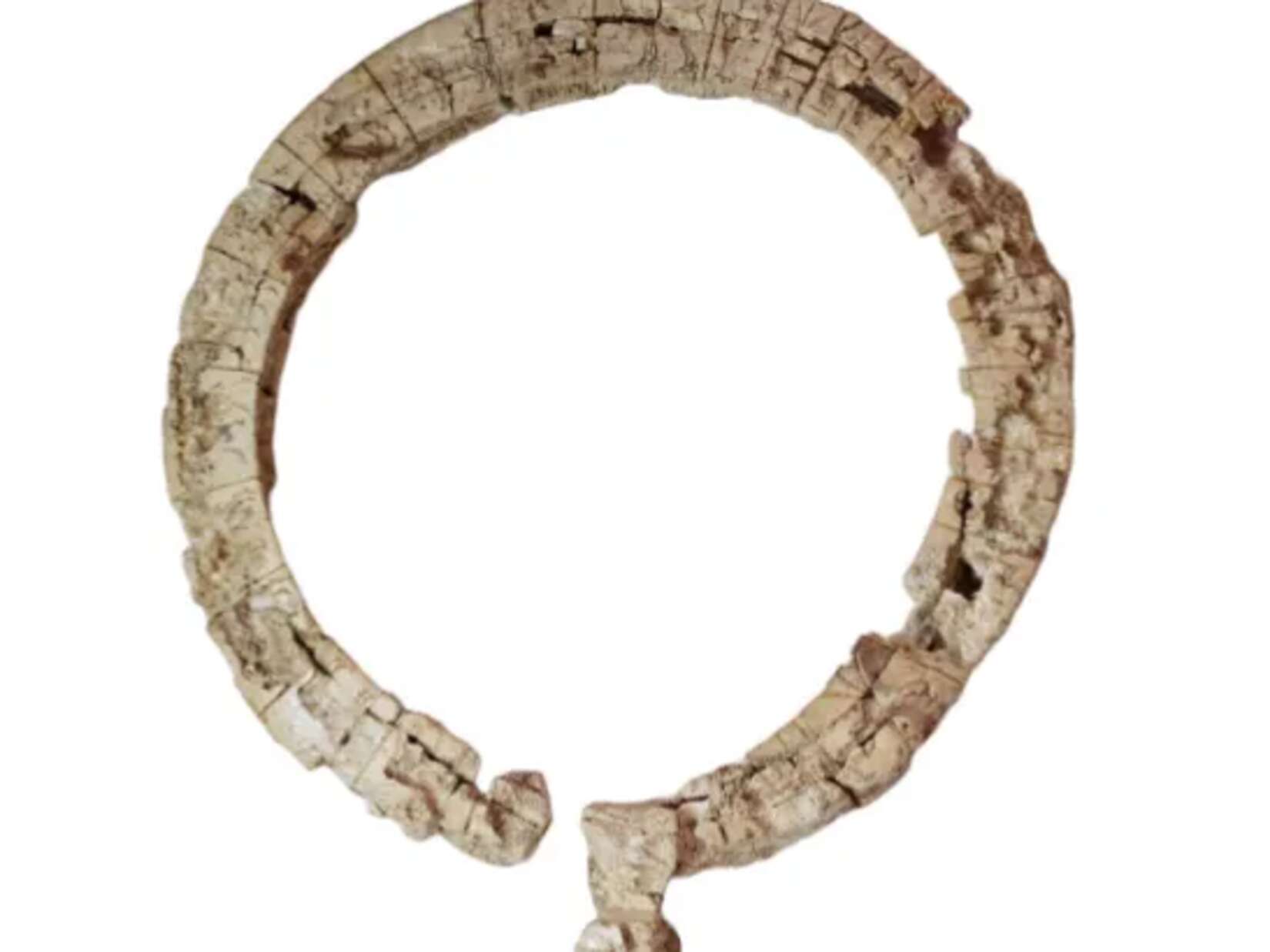

In 2024, archaeologists uncovered a remarkable artifact in the Anetaki area of Knossos, located in Crete, Greece: an ivory scepter bearing the longest known inscription in the Linear A script. The principal investigators were Athanasia Kanta, Dimitri Nakassis, Thomas G. Palaima and Massimo Perna.
This item is not only of artistic and ceremonial importance, but also a key to understanding the enigmatic Minoan civilization. Linear A script is the still-undeciphered writing system used by the Minoans during the Neopalatial period (c. 1700–1450 BCE). The discovery of this scepter has opened up new avenues for the study of Minoan administration, religion, and the complex role of writing in their society.
The scepter is a finely crafted object, with an elongated handle and a circular head, both adorned with intricate Linear A inscriptions. The head of the scepter contains twelve square panels, each decorated with a four-legged animal. This could be a symbolic or ritualistic motif, possibly representing offerings or sacred imagery. The presence of these animals suggests that the scepter played an important ceremonial role. It may have been associated with religious or state functions.
The inscription spans the entire length of the handle and the circular head, containing about 119 symbols. This makes it the most extensive example of Linear A discovered so far. The signs consist of a mixture of logograms and syllabic characters. This indicates the script’s complex nature, which combined both phonetic and ideographic elements. The exact meaning of the inscriptions remains unclear. However, they seem to serve both administrative and ritualistic functions. This reinforces the idea that Minoan writing was deeply intertwined with the religious and political life of the time.
This scepter was found in the “Fetish Shrine” at the Anetaki site, a building identified as a religious or ceremonial center. The shrine contains two connected rooms and a central antechamber, suggesting that the scepter was not merely an object of artistic craftsmanship, but an item of significant ritual importance.
The discovery of the scepter within a religious context implies that a high-ranking official or priest likely used it. It may have served as a symbol of authority or divine favor. Furthermore, the role of such objects in Minoan society speaks to a culture where religious practices were intricately tied to governance. The implication is that in this society the elites wielded both spiritual and political power.

The discovery of the Minoan ivory scepter is a significant breakthrough in the study of the Linear A script. Despite numerous attempts, Linear A remains largely undeciphered. Scholars still debate its connection to other ancient scripts, especially Linear B. The inscriptions on the scepter feature both ritualistic imagery and administrative symbols. These provide an invaluable opportunity to explore the role of writing in Minoan Crete. The numerical signs found on the handle stand in contrast to the lack of numerals in the ritual sections. This difference highlights the potential dual purpose of writing in Minoan society: as a tool for governance and as a vehicle for religious expression.
By analyzing these inscriptions alongside other Linear A texts, researchers might uncover new insights into the structure of the script. This could lead to a better understanding of its role in Minoan life and culture. The scepter’s inscriptions offer a glimpse into the complexity of Minoan society, particularly in terms of administration and ritual.
The Minoan ivory scepter, with its extensive Linear A inscription, provides a rare look into the ceremonial and administrative practices of this ancient civilization. While the exact meaning of the inscription remains elusive, the scepter stands as a testament to the intricate nature of Minoan writing, religion, and political organization. At the same time, as scholars continue their work, the scepter may hold the key to unlocking more mysteries of the Minoan world. This discovery brings us closer to understanding the sophisticated society that once flourished on the island of Crete.
